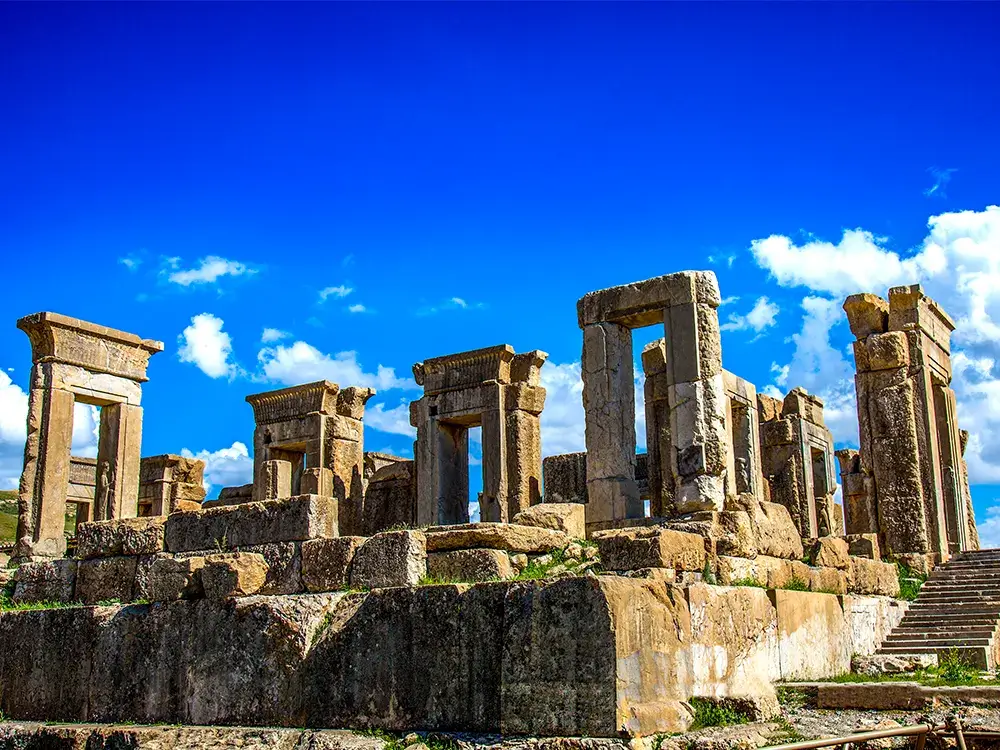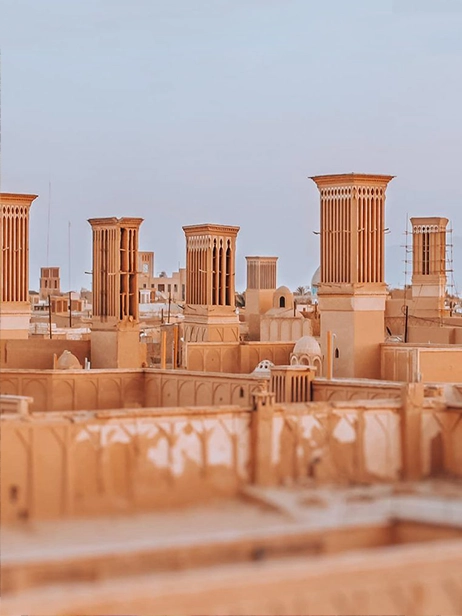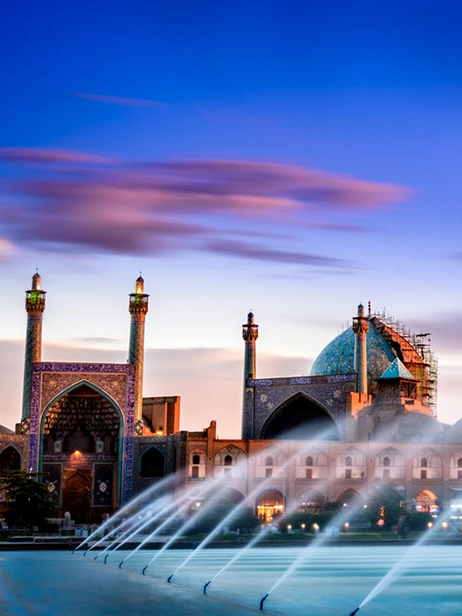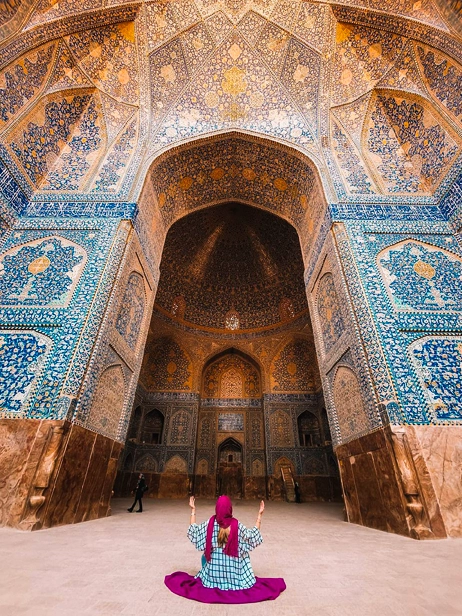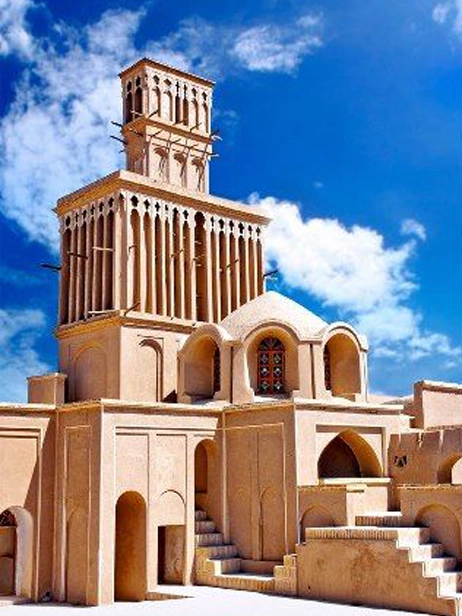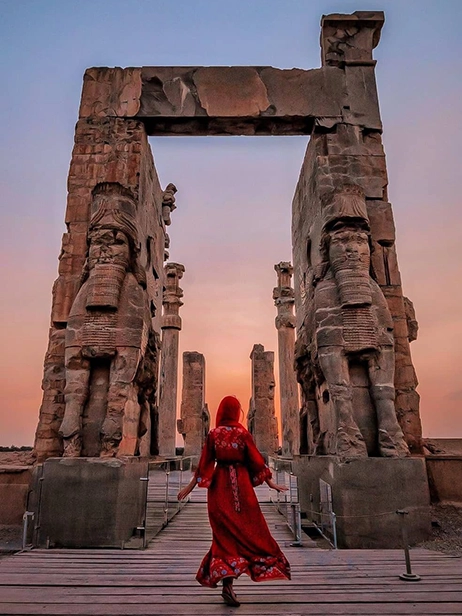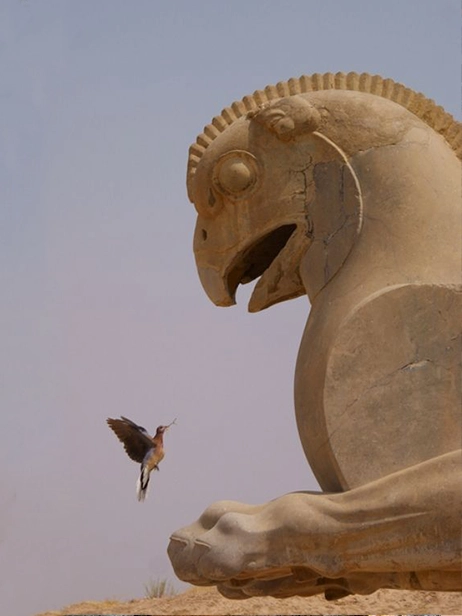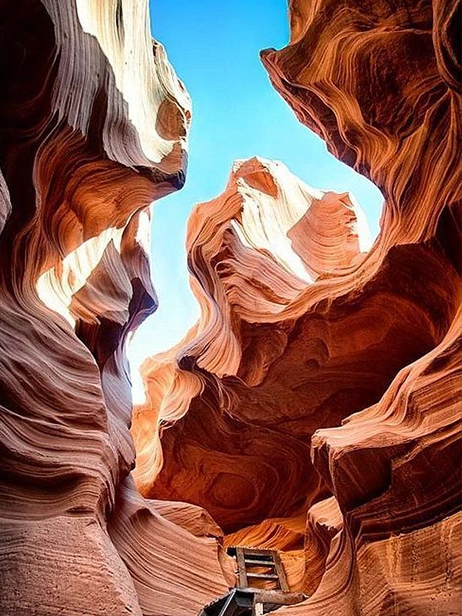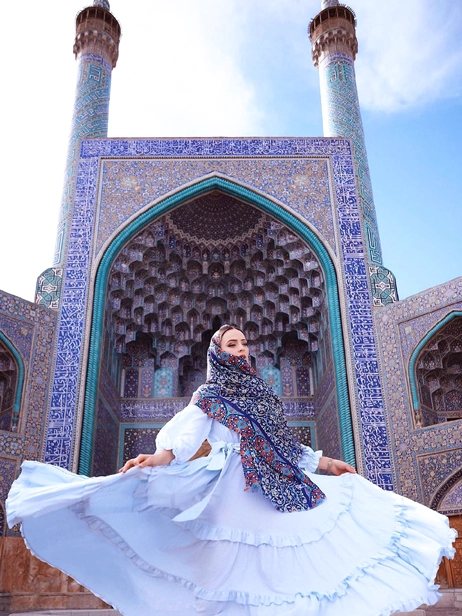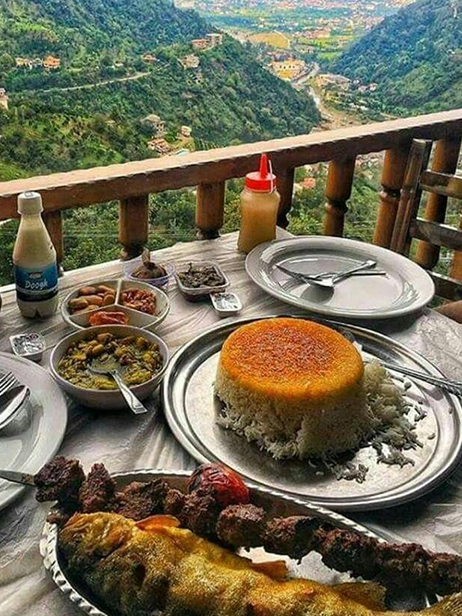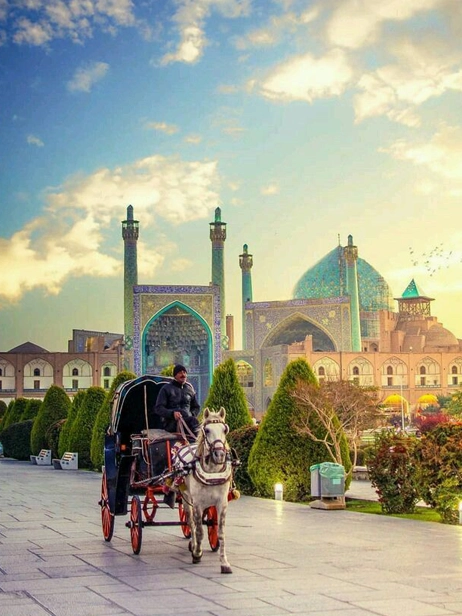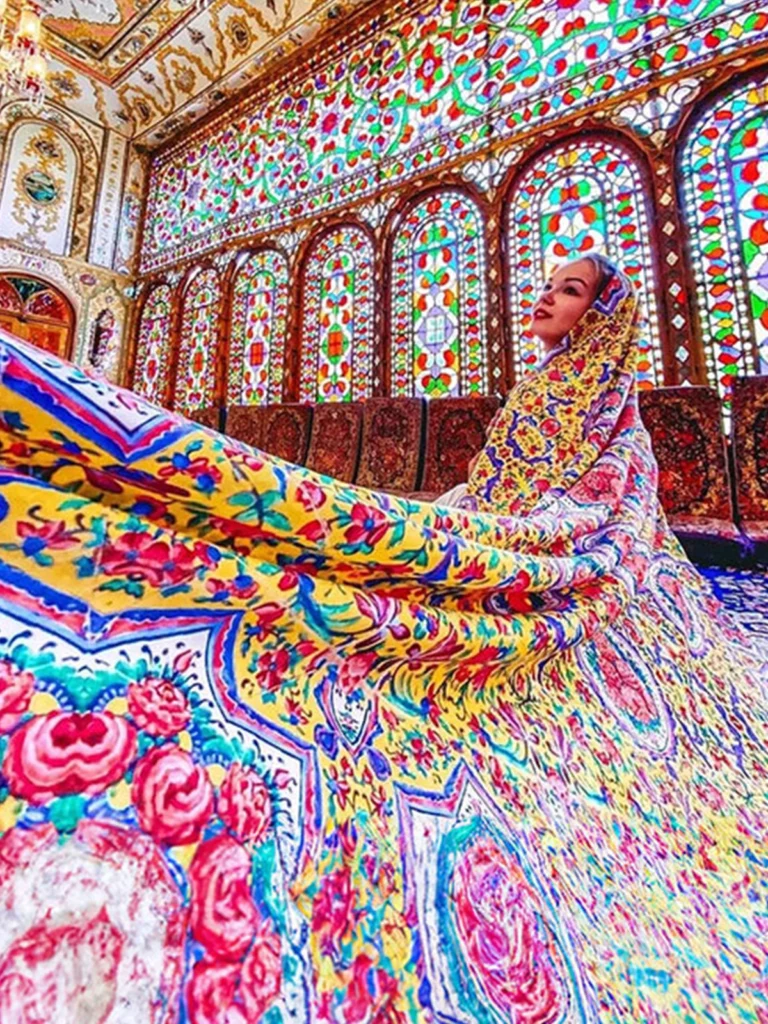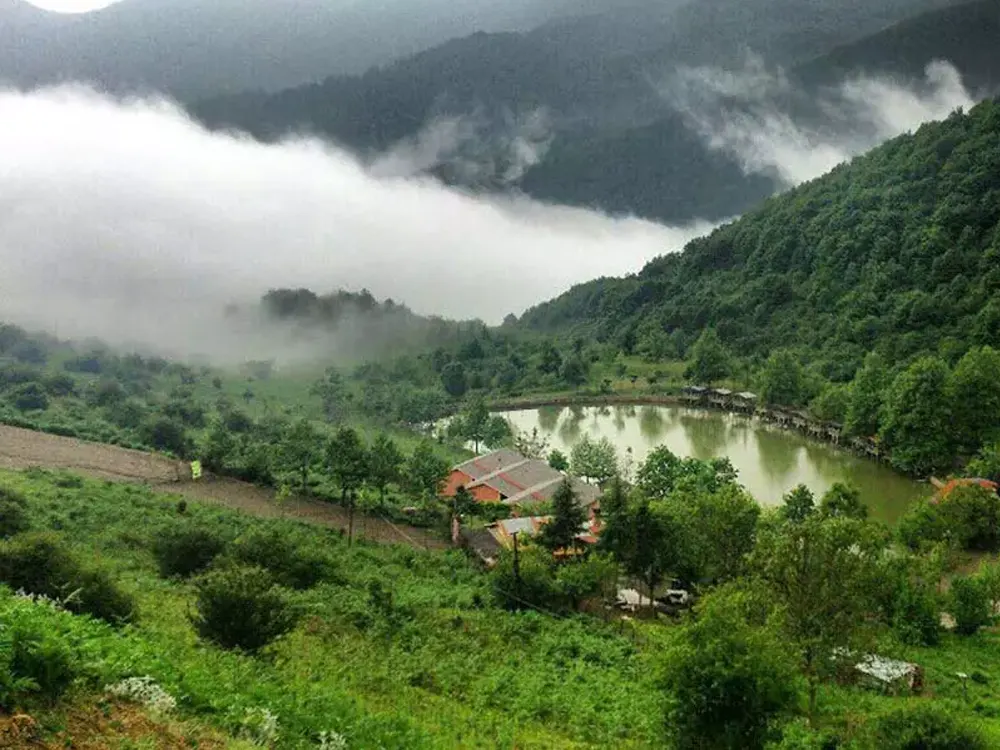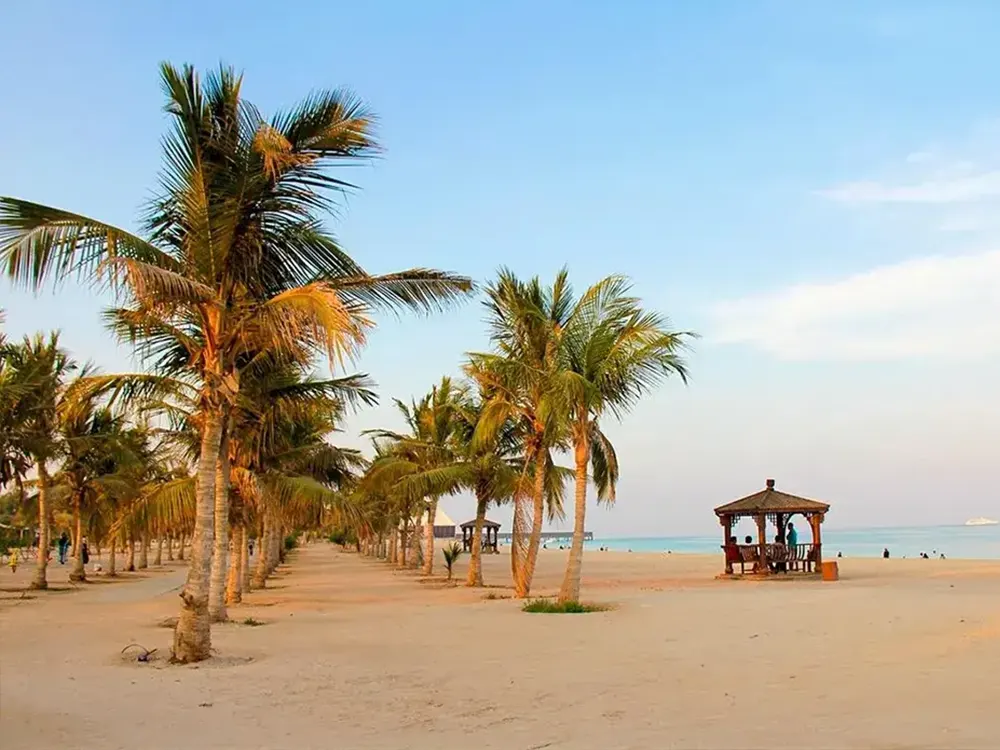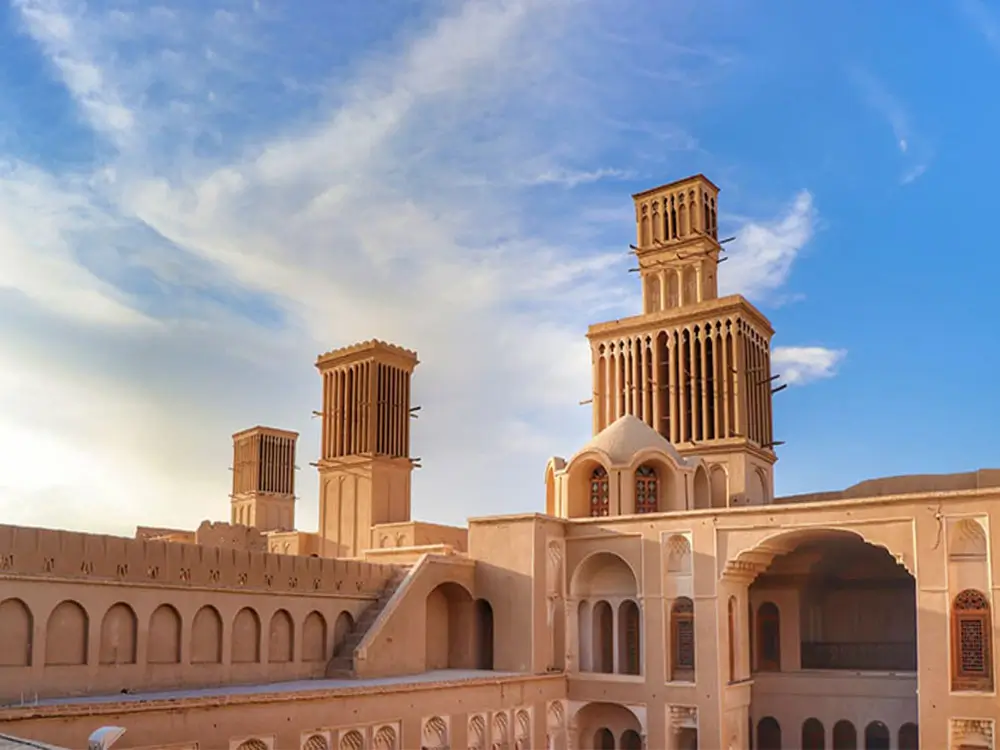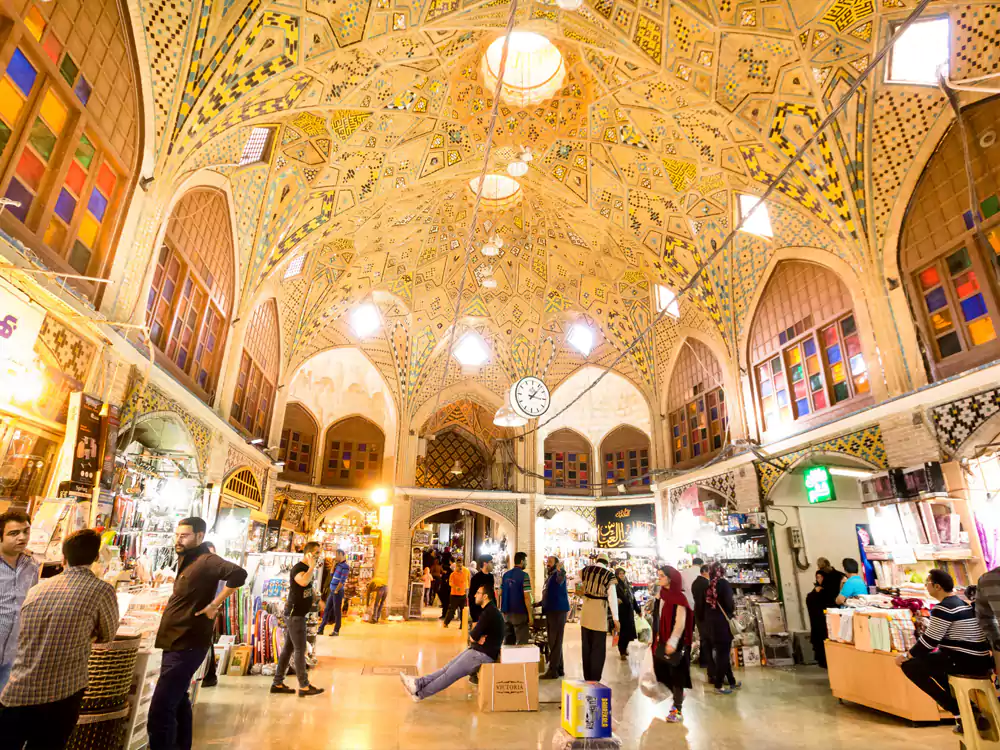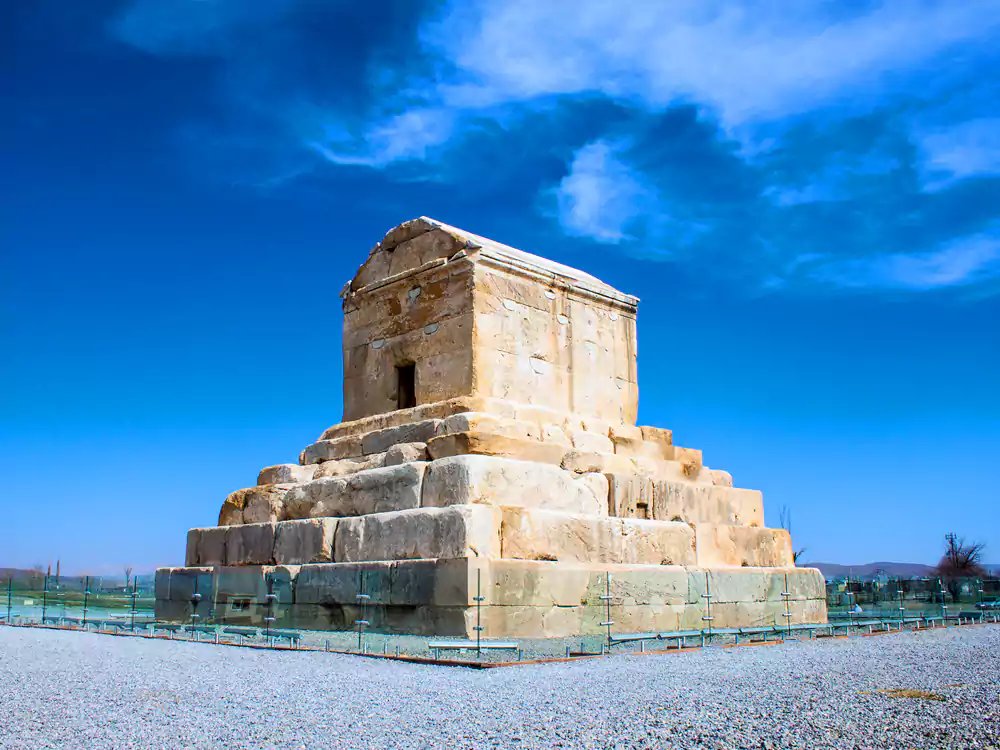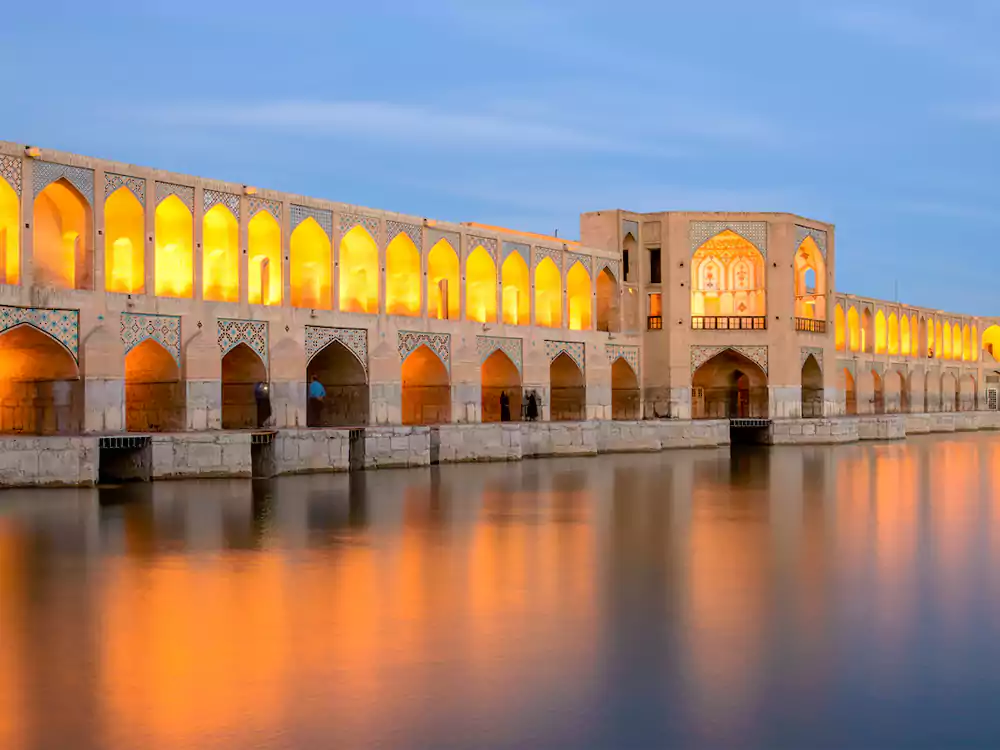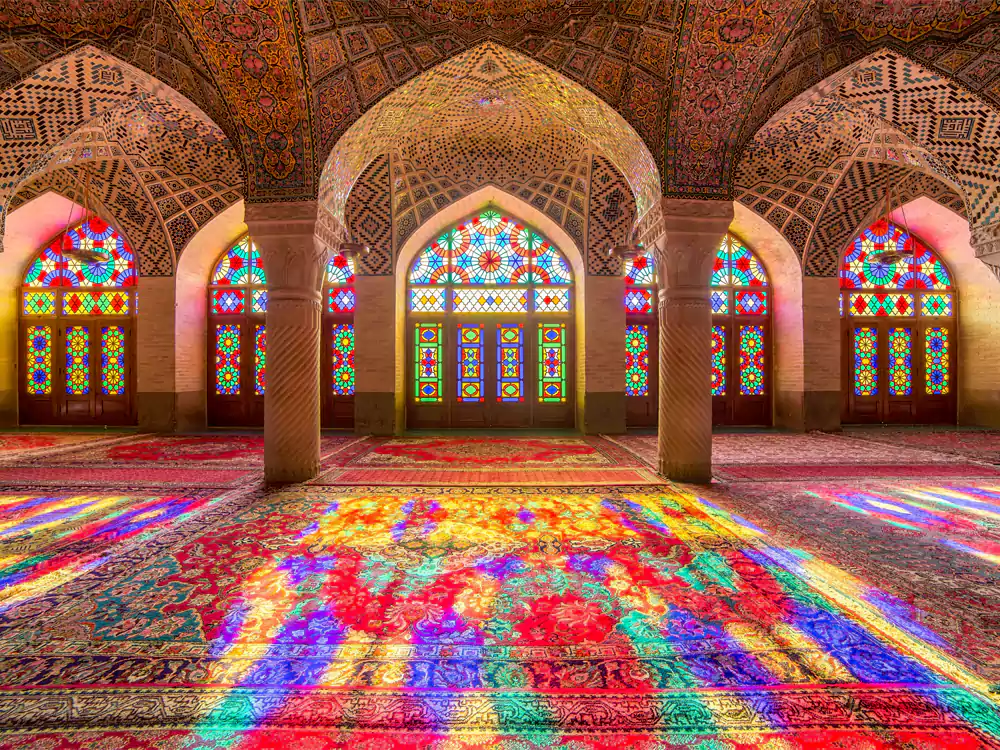Welcome to Persepolis Iran, once the capital of the ancient Achaemenid Empire. This historical place stands among the towering pillars and spectacular buildings that transport one to a time of monarchs and conquerors. This article will transport you back in time as it explores the architectural marvels, complex art, and enduring impact of this ancient metropolis.
So, if you’re ready to explore Persepolis’ wonders, join MabnaTrip in our Iran tour to Persepolis.
Persepolis Iran History: Who Built Persepolis
Persepolis Iran, an homage to historical grandeur and architectural marvel, is a vivid witness to the rich history and cultural legacy of the Achaemenid Empire. Darius I built this historic city in the sixth century BC as more than simply the ceremonial capital of a vast empire; it reflected Persian artistry and might. The splendor of its remains, now a UNESCO World Heritage Site, continues to draw visitors and scholars alike, offering an overview into the lives and times of one of history’s most important empires.
Here is the Table of the Achaemenid Empire Timeline :
Historical Persepolis
The Achaemenid Empire, created by Cyrus the Great and enlarged by his successors, spanned from the Balkans and Eastern Europe in the west to the Indus Valley in the east. This empire, known for its military force and administrative prowess, shaped the ancient world.
Darius I and the Establishment of Persepolis
Darius I, known as Darius the Great, was the visionary behind Persepolis. His ambition was to create a political center and a cultural and artistic hub that reflected the empire’s glory. Under his reign, Persepolis transformed from a mere idea into a magnificent reality, becoming a symbol of the empire’s wealth, power, and artistic achievement. This city was not just a physical space but an embodiment of the Achaemenid’s architectural and cultural ideals.
Architectural Highlights of Persepolis
The architectural splendor of Persepolis is evident in its ruins, which continue to echo the grandeur of the Achaemenid Empire despite centuries. The site includes several palaces, each serving a specific purpose and showcasing exquisite craftsmanship. One of the most prominent structures is the Apadana, an audience hall used for royal receptions. This hall, with its imposing pillars and elaborate reliefs, symbolizes the architectural prowess and the cultural richness of Persepolis Iran.
Structure | Purpose | Dimensions/Features |
|---|---|---|
Apadana | Audience Hall | 72 columns, 60m sides |
Tachara Palace | Darius I’s private palace | Elaborate bas-reliefs |
Treasury | Storage and administration | Central location in Persepolis |
Geographical Significance: What Is the Significance of Persepolis?
Historically and archaeologically fascinating for a long time, the ancient city of Persepolis lies in the center of Iran and has a strategic location. Encircled by the rough grandeur of the Zagros Mountains, which provide a natural stronghold against invaders, this once-majestic capital of the Achaemenid Empire is located in the Fars Province. The site, meticulously chosen for its geographical advantages, symbolizes the empire’s strength and strategic acumen. With aerial views revealing its impressive layout and the surrounding protective landscape, the city’s ruins remain a focal point for understanding ancient Persian military and urban planning.
Architectural Layout
The architectural grandeur of Persepolis is an extraordinary testament to ancient Persian ingenuity and aesthetics. The city’s layout reflects a complex and well-thought-out urban design, blending functionality with artistic splendor. The towering pillars that still stand are central to this architectural wonder, evoking the city’s past magnificence. These pillars, part of various structures like the Apadana Palace and the Hall of a Hundred Columns, were not just structural elements but also symbolized the empire’s reach and influence.
If you are interested in Shiraz Tours, contact us.
Architectural Marvels of Persepolis
The Apadana, the magnificent audience hall of Darius, is a striking symbol of the Achaemenid Empire’s architectural prowess in Persepolis Iran. Designed to awe and inspire, this grand hall was where Darius I showcased his empire’s might to the world. Its expansive space, supported by 72 robust columns, each standing tall at 19 meters, reflects an extraordinary fusion of scale and elegance. The architecture of the Apadana not only served a functional purpose as an audience hall but symbolized the empire’s reach and power. Intricately detailed bas-reliefs adorning its walls depict various nations under Persian rule, offering a glimpse into the empire’s diversity and Darius’s diplomatic prowess.
Intricacies of the Persepolis Tachara Palace
The Tachara Palace, Darius I’s private palace, showcases the intricate design and careful planning characteristic of Persian royal structures. This more minor yet significant palace was adorned with elaborate carvings, a testament to personal luxury and aesthetic sensibility in ancient Persia. Its walls, etched with images of the king and his courtiers, offer a window into the time’s daily life and royal grandeur. Using durable materials like limestone ensured its survival through millennia, allowing modern visitors to appreciate its historical significance and beauty.
The Tachara Palace was among the few structures in Persepolis that survived Alexander’s invasion relatively intact. Its design reflects privacy and opulence, fitting for a king’s residence.
The Functional Essence of the Treasury
The Treasury of Persepolis played a pivotal role in the administrative and economic framework of the Achaemenid Empire. It was a storehouse of wealth and a center for managing the empire’s finances. This building housed significant records, precious metals, and artifacts, underscoring its importance in the ancient world. Excavations have revealed numerous inscriptions and artifacts, providing critical insights into the empire’s economic system and wealth distribution.
Symbolism and Logo Art in Persepolis
On the map of Persepolis Iran, several Bas-reliefs provide a fascinating view into the history of the Achaemenid Empire. Each relief is a realistic stone image that offers a tale about the people, traditions, and beliefs of the time, in addition to representing the kings and their victories. These carvings are more than mere decorations; they are historical documents, capturing moments in time. The representations of delegates bringing tributes, soldiers in battle, and scenes of royal life provide a dynamic visual narrative of the empire’s might and diversity. They also offer a unique cultural and political significance symbol bridging the past and present.
Iconography and Cultural Representation
The art of Persepolis is a rich tapestry of cultural representation, vividly portraying the many faces of the vast empire known as Takhte Jamshid in Persian. The iconography of Persepolis is a celebration of the empire’s reach, featuring figures from different nations, each distinct in their attire and bearing. These artistic images testify to the empire’s administrative and diplomatic prowess. The inclusivity and respect for diverse cultures in these carvings reflect a sophisticated understanding of governance and coexistence.
Art and Symbolism in Persepolis Reliefs:
Location | Scene | Cultural Significance |
|---|---|---|
Apadana Stairways | Tribute processions | Representation of empire’s diversity |
Eastern Stairway | Royal ceremonies | Showcases Achaemenid power and culture |
The Legacy of Persepolis in Modern Times
Persepolis Iran, continues to captivate the modern culture and arts, transcending time and geographical boundaries. Its influence is evident in contemporary art, sketch, literature, and media forms, where its grandeur and historical significance are often revisited and reimagined. The site has inspired numerous works, from novels to films, reflecting its enduring impact on collective memory and imagination. Persepolis remains a focal point for ancient history and archaeology in education and research, continually offering new insights and discoveries.
Tourism and Preservation Efforts
Persepolis is a major tourist destination and a vital target for preservation efforts because it is a UNESCO World Heritage Site. The site’s architectural beauty and historical grandeur bring thousands of tourists annually. These initiatives ensure that Persepolis’s awe-inspiring beauty and historical value are protected for future generations, allowing them to experience a tangible connection to the Achaemenid Empire.
Persepolis Through Time (2021-2023):
Year | Visitor Numbers | Notable Discoveries |
|---|---|---|
2021 | 1,523,650 | The discovery of a fresh collection of cuneiform inscriptions from the sixth century BC |
2022 | 1,854,230 | A new portion of the royal city is excavated, revealing magnificent palaces and temples. |
2023 | 2,234,567 | Discovery of a new royal tomb containing the remains of a high-ranking Achaemenid official |
Persepolis Iran Today
A member of UNESCO’s World Heritage List, Persepolis is still an important landmark in contemporary Iran. This historic city is a live reminder of Iran’s rich heritage and culture, not merely a remnant from the past. Persepolis is a world-renowned architectural wonder and emblem of historic splendor today, drawing tourists from all over the world. The site provides a singular combination of spectacular beauty and historical research, particularly in the evening and from above, when the majesty of the complex’s architecture and its expansive landscape are revealed.
Myths and Legends Surrounding Persepolis
Persepolis is shrouded in myths and legends, contributing to its mystical aura. These stories, passed down through generations, add intrigue and mystery to the site. They range from tales of hidden treasures to legends about their construction by mythical creatures. While not historically accurate, these narratives play a crucial role in understanding the cultural significance of Persepolis and its lasting impact on Iranian folklore and identity.
Archaeological Discoveries and Theories
The excavation of Persepolis has unearthed a wealth of information about its original structure and the life before its destruction. Each discovery offers a new puzzle piece, enhancing our learning about this ancient city. From intricate carvings to the foundations of its majestic palaces, these archaeological findings provide critical insights into the architectural ingenuity and cultural practices of the Achaemenid Empire.
Persepolis Through the Lens in modern life
Persepolis’s aerial views offer a unique perspective on its architectural brilliance. From above, the intricate layout of the city, with its gardens, gates, and walls, is visible in its entirety, showcasing the grandeur and strategic planning of the Achaemenid architects. These views also help us understand the city’s relationship with its surrounding landscape, including its defensive structures and access routes.
Persepolis Under the Stars
Persepolis at night is an enchanting experience, with the ruins lit up against the backdrop of a starry sky. The sunset views over the ancient stones create a magical atmosphere, allowing visitors to connect with history deeply. The play of light and shadow over Persepolis’s pillars and walls gives a new dimension to its beauty, making it an unforgettable experience for those who visit after dusk.
Persepolis in Modern Culture (2021-2023):
Year | Cultural References | Description |
|---|---|---|
2021 | Assassin’s Creed Odyssey features Persepolis | A detailed recreation of Persepolis in the video game |
2022 | Iranian film The Dig | Story of archaeologists excavating Persepolis |
2023 | Persepolis International Music Festival | First-time event with global musicians |
Conclusion
In conclusion, the ancient city of Persepolis in Iran is a towering tribute to the Achaemenid Empire’s splendor. We had entrance into historical paths and the background of Persepolis Iran, from the magnificent Apadana to the elaborate Tachara Palace, uncovering stories in stone.
Persepolis’s bas-reliefs and colossal architecture highlight the time’s creative and cultural sophistication and glimpse the varied diversity of nations that thrived under Achaemenid authority. Persepolis continues to captivate scholars, visitors, and history enthusiasts alike as a beacon of ancient history and a symbol of cultural heritage.
Under the starlit Iranian sky, its ruins evoke a splendorous and complicated past, encouraging anyone to dive deeper into the rich fabric of human history. With MabnaTrip and our services, you can easily travel to these unique places and join the Persian party, which can be a fantastic experience.








